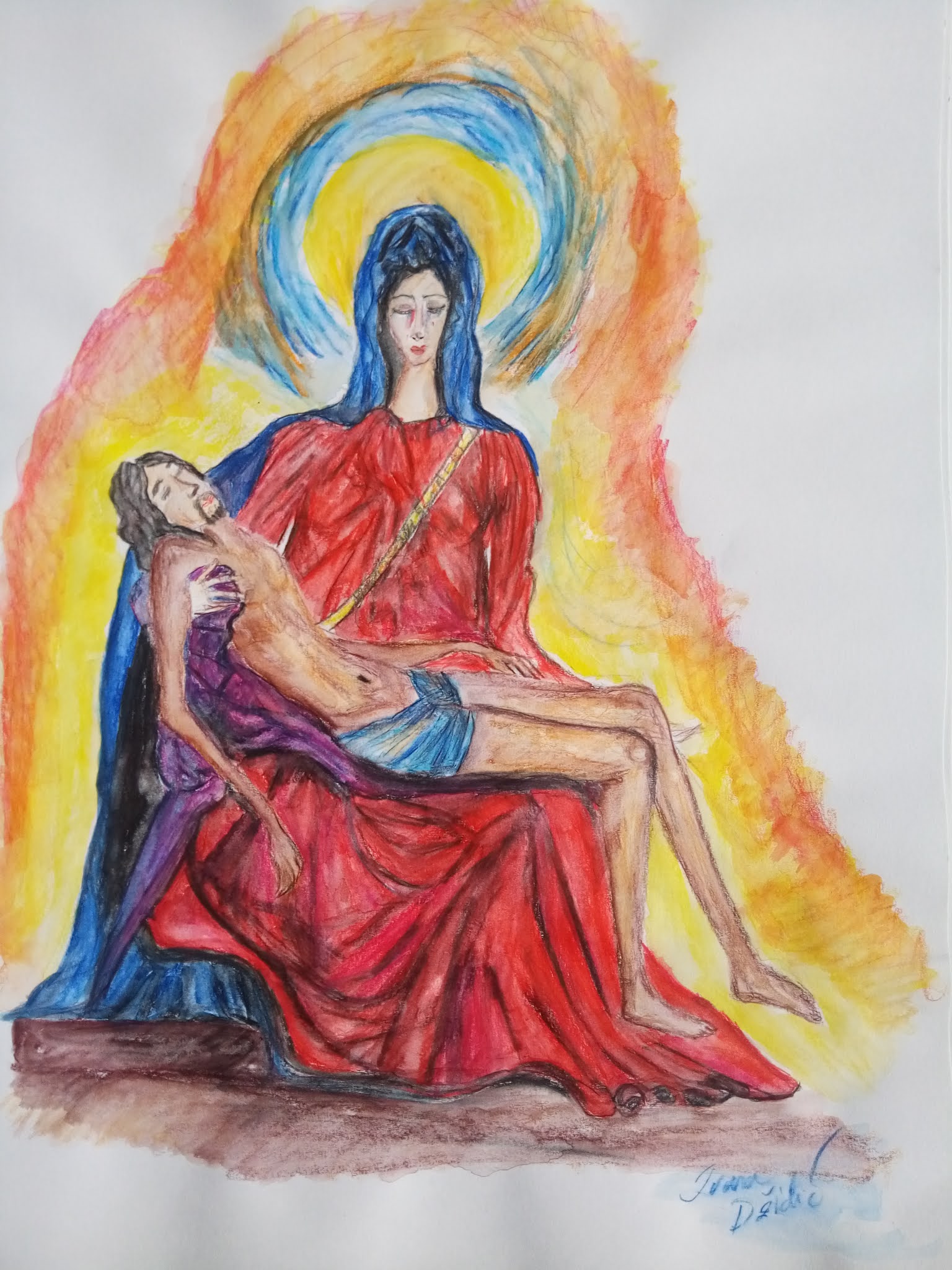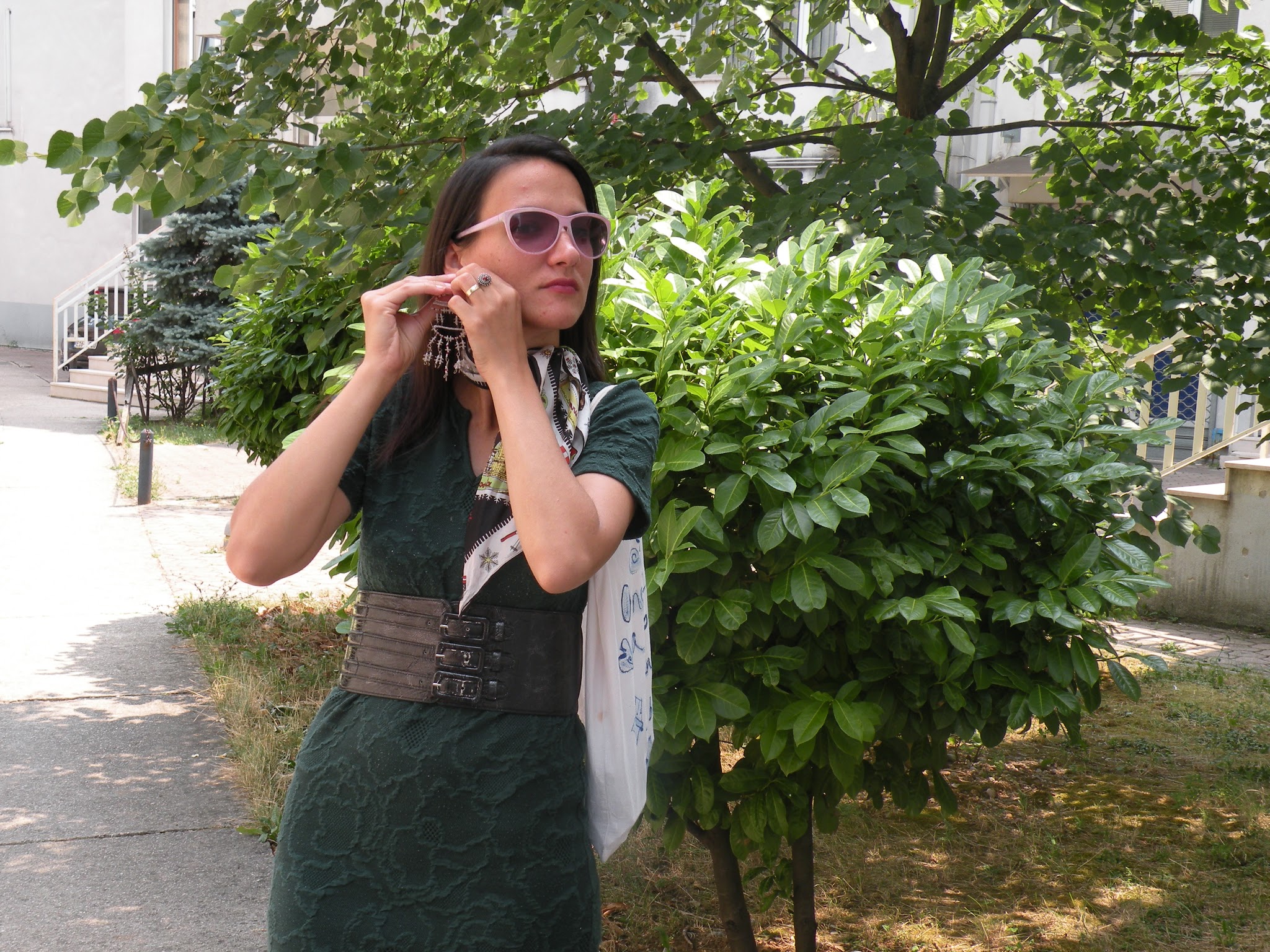A STUDY OF MICHELANGELO'S PIETA SCULPTURE
This famous work of art depicts the body of Jesus on the lap of his mother Mary after the Crucifixion. The theme is of Northern origin.[when defined as?] Michelangelo's interpretation of the Pietà is unprecedented in Italian sculpture.[3] It is an important work as it balances the Renaissance ideals of classical beauty with naturalism.
In 2019, a small terracotta figure identified as a model for the final sculpture was displayed in Paris.[4]The structure is pyramidal, and the vertex coincides with Mary's head. The statue widens progressively down the drapery of Mary's dress, to the base, the rock of Golgotha. The figures are quite out of proportion, owing to the difficulty of depicting a fully-grown man cradled full-length in a woman's lap. Much of Mary's body is concealed by her monumental drapery, and the relationship of the figures appears quite natural. Michelangelo's interpretation of the Pietà was far different from those previously created by other artists, as he sculpted a young and beautiful Mary rather than an older woman around 50 years of age.[5]
The marks of the Crucifixion are limited to very small nail marks and an indication of the wound in Jesus' side.
Christ's face does not reveal signs of the Passion. Michelangelo did not want his version of the Pietà to represent death, but rather to show the "religious vision of abandonment and a serene face of the Son,"[6][better source needed] thus the representation of the communion between man and God by the sanctification through Christ.
When Michelangelo set out to create his Pietà, he wanted to create a work he described as "the heart's image".[7]
THE MAKING OF THE PIETA PAINTING
I sketched this painting very late at night (if I recall well) and then added water the next day. I didn't really think about colours while I was sketching, but my choices for Christ's and Virgin Mary's attire are quite traditional. Red and blue for Virgin Mary and blue for Christ. Here is an article explaining why Mary and Jesus are traditionally depicted wearing red and blue. Despite finishing this painting quite quickly, I remember feeling very saddened by it. No matter if you are religious or not, it's a very sad scene, a mother holding her dead child in her lap.




















Te quedo muy bien . Es una pintura dificil pero te salio con mucho sentimiento. Te mando un beso
ReplyDeletegracias
DeleteI am impressed! Amazing picture, you are so, so talented Ivana :) Happy Easter!
ReplyDeleteThanks
Deletedzijekuje
ReplyDeleteLove your color and illumination of your illustration. So beautiful! Happy Easter!
ReplyDelete<3
DeleteSo great you could study the painting this way. Wonderful!
ReplyDeleteThank you
DeleteYour talent never ceases to amaze me Ivana! You captured Michelangelo's Pièta magnificently Happy Easter, my dear friend xxx
ReplyDeleteThank you so much.
DeleteBeautiful!;)
ReplyDeleteThanks.
DeleteWhat a beautiful painting, and I was so moved! It is very very sad scene, but I can learn important heart! Thank you for sharing<3
ReplyDeleteakiko
Thank you Akiko.
DeleteThis is a lovely art study. The colors and different techniques you used really create a nice dimensional effect that echoes the original statue very well.
ReplyDeleteThank you Rowena. I think I might repeat this motif in a larger frame and try to really recapture the 3D dimensional feel of the statue.
DeleteIt's really nice painting.
ReplyDeleteIf you have any issues related AOL Mail then click here to Install AOL Desktop Gold | Download AOL Desktop Gold or visit our website.
Lovely sketch :-D
ReplyDelete